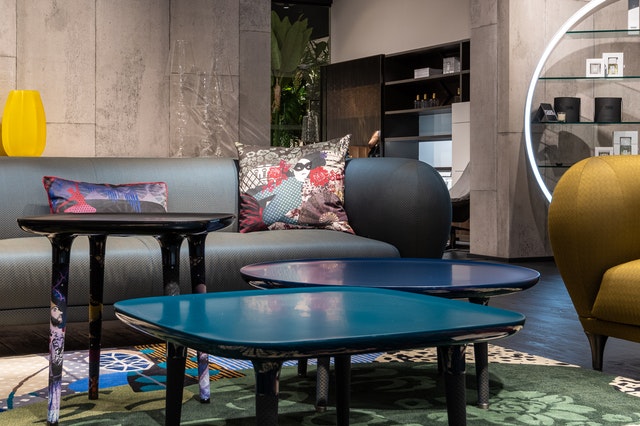Learn the pros and cons of laminates, veneers, glass, or grooved tables before visiting the furniture store with this informative table buying guide.
Every home needs at least one table. Be it a desk in a home office, a dining room table ensemble, or a heavily used coffee table in the living room, few homes would be complete without one or more tables in every room.
Though every room may need a table, not all tables are suited for rooms. Tables are being sold in furniture stores today that need a word of caution. These tables will look great in the showroom; they may appear to be the perfect addition to that personally designed living space, but buyer beware; choosing one of these tables may cause daily, though often unspoken: regret.
Tables in the furniture store don’t need a salesperson; they are designed to speak for themselves, using visual appeal. Most are beautiful, fit perfectly into any room, and can easily accent any decorating style, be it modern, contemporary, minimalist, or any favored scheme the buyer is attracted to. Though function is essential, design often plays a big part in the choice of tables. However, within these attractive design features lies the hidden disadvantage of owning one of these tables.
Wood Veneers or Laminates
These are the most deceptive. They look fantastic in the showroom. The redwood or oak finish is perfect for that formal dining room. What’s not to like about this table? But, unfortunately, it’s a veneer or, even worse, a laminate.
Veneers are thin wood pieces connected to slabs of wood composite materials. Laminates are printed strips of wood grain on plastic, foil, or paper and glued to a pressed wood base or variation base. Both will look great for a few years, but, especially in the case of a dining room table, the constant damp washing after daily use will begin to warp the edges of the table.
Water seeps underneath that beautiful facade and swells the cheaper wood underneath, significantly if the table extends in the middle. The middle seam will be the first to start showing these signs of swelling.
Edges will begin to rise and pop up. Then, the glue starts to dissolve, and, from that point, it’s only a matter of time before the table is a visual irritation.
Pine
The problem with pine, though it holds a beautiful finish, is that the wood is too soft. Within just days of regular use, indents, scratches, and stains will be noticed. Such soft sheets of paper protection must be used to prevent leaving pen or pencil impressions when using a pine table for a writing surface.
It’s a better wood for outdoor picnic tables, or when the goal is to create a worn, country look in your kitchen, we’re beating up; shabby weather furniture is the design scheme. Pine will work well in any room in which minimal use is needed. It’s perfect for supporting a lamp, books, or photos, not so good for a high functioning secretary, dining, or coffee table.
Glass
Avoid choosing a clear glass dining table, living room coffee table, or bedroom nightstand at all costs, especially if it has a frosted finish underneath. These tables displayed at the furniture store are the highest maintenance tables ever to enter the interior decorating scene.
It is an exercise in futility to keep them clean and streak-free, but they also attract dust like a magnet. The frosted finish underneath will grab and never release oils, little handprints, or any other liquid that comes in contact with it, leaving a shabby, dirty look, despite the most significant efforts to remove them.
A glass table also risks scratching and accidental shattering. Therefore, warnings are often included with the table, cautioning the user against setting high heat or extra cold items on the table to avoid this risk of shattering. Glass tables are perfect for the wealthy since only a maid would tolerate the constant cleaning of this horizontal surface requires.
Grooved or Planked
Turn and walk away from any table, no matter how beautifully designed, finished, or shaped, incorporating grooves (planks) on the top’s surface. Preventing a build-up of small food crumbs, dusty clumps, and other unidentifiable particles will constantly be frustrating.
Have a toothbrush and dustpan handy to keep this table attractive. Any level of groove on the surface will collect daily dirt, so unless you enjoy tedious cleaning, stay away from this table design.
If this is truly a “must-have” table, consider using it in a protected outdoor setting where the constant brushing off of collected crumbs won’t be an issue.
Criticism aside, all tables above have been incorporated in homes for years because they fit into a budget or complement their interior design scheme. Keep in mind that a glass table is better suited for accent tables in a living room or bedroom. Pines are best used to display books or as an entertainment cabinet for more sedentary purposes. Veneers are slivers of fine wood and will offer a dining room service for a few good years. Finally, planks will always be a high-maintenance design, while laminates are simply a waste of money.
Bottom line; the best tables to buy in the furniture store for any room in the home are solid tops made from hardwoods. Hardwoods perform superbly throughout time and antiquity. They will be functional, beautiful, and always worth the investment in any interior home decorating space.




